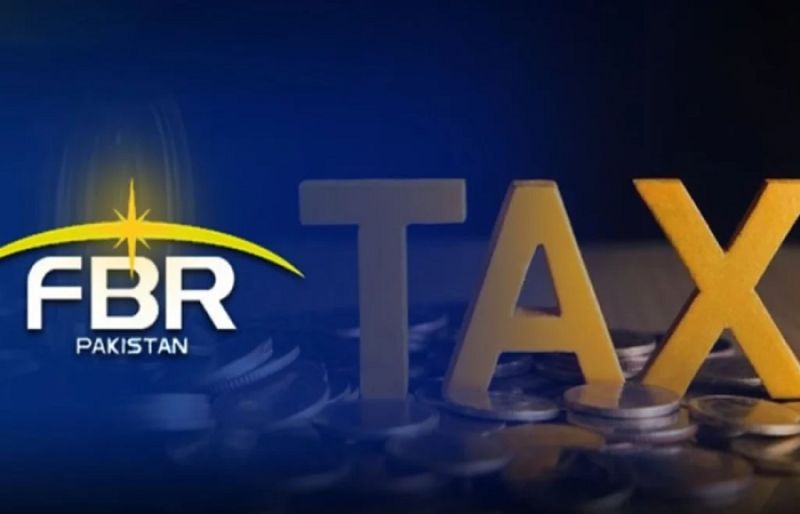Business
Navratri sales hit 10-year high on GST cuts: Officials – The Times of India

NEW DELHI: On the back of a fillip provided by a reduction in GST on 375 items, Indian consumers flocked to stores and car dealerships resulting in the highest Navratri sales in over a decade, govt officials said, citing industry data.They argued that the move lowered prices, helping families upgrade vehicles, buy white goods and spend more freely on lifestyle products, “turning festive cheer into record-breaking consumption”.GST rates for food items, daily-use products, white goods, cement and automobiles have been slashed as the Centre and the states agreed to reduce the number of slabs and end cess on all luxury and sin products, barring tobacco. Apart from making the indirect tax regime simpler, the idea was to boost consumption, even if it resulted in a temporary impact on tax collections.

Car sales vroom
“By rationalising GST slabs and easing the tax burden on both essential and aspirational items, govt fostered an environment of confident spending. As a result, brands and retailers reported sales growth ranging from 25% to 100%, marking a major boost for India’s consumption-driven economy,” an official said.
GST reset, pent-up demand driving sales over last 10 days
Although companies had complained about an adverse impact on sales after PM Narendra Modi first announced the plan for GST rate rationalisation in his Independence Day speech, collections in Sept – based on transactions in Aug – grew at over 9%, the fastest pace of growth in four months, according to the data released on Wednesday.While goods and services are more affordable, especially after govt nudged businesses to pass on the benefits to consumers, pent up demand is also a factor behind a surge in sales over the last 10 days.As a result, companies such as Maruti Suzuki, the country’s largest carmaker, reported 3.5 lakh bookings with nearly 2.5 lakh pending orders. By the end of Navratri, it was expected to deliver 2 lakh vehicles, 2.3 times last year’s level of 85,000 cars. Similarly, M&M has reported a 60% jump in its top selling XUV700 and Scorpio N sales, while demand for Hyundai’s Creta and Venue are also seen to be strong.In the consumer electronics space, companies and top retailers are reporting significant rise in sales.
Business
Home Depot cuts earnings outlook as home improvement demand falls short of expectations

Home Depot on Tuesday cut its full-year profit forecast and missed Wall Street’s earnings expectations for the third straight quarter as it saw weaker home improvement demand, tepid consumer spending and lower than usual storm activity.
The retailer said it now expects full-year sales will climb about 3% and comparable sales, which take out the impact of one-time factors like store openings and calendar differences, to be slightly positive. That compares to its previous expectations for full-year sales to grow by 2.8% and comparable sales to increase by 1%.
The revised outlook includes an estimated $2 billion in incremental revenue from GMS, a building-products distributor that Home Depot acquired earlier this year. The company’s sales were not part of its previous full-year guidance.
Home Depot expects full-year adjusted earnings per share to decline by about 5% from the year-ago period, compared to its prior expectations that they would fall by about 2%
In a CNBC interview, Chief Financial Officer Richard McPhail said the retailer previously expected home improvement activity would increase. It also anticipated higher sales of roofing materials, generators and other supplies that typically sell before and after seasonal storms.
Neither dynamic materialized, he said, putting pressure on the business.
“When we set guidance, we had anticipated that demand would begin to accelerate gradually in the back half of the year as interest rates and mortgage rates eased,” he said. “But what we saw was that ongoing consumer uncertainty and continued pressure in housing are disproportionately impacting home improvement demand.”
Here’s what Home Depot reported for the fiscal third quarter compared with Wall Street’s estimates, according to a survey of analysts by LSEG:
- Earnings per share: $3.74 adjusted vs. $3.84 expected
- Revenue: $41.35 billion vs. $41.11 billion expected
Home Depot’s stock dropped about 2% in premarket trading Tuesday. As of Monday’s close, the company’s shares are down about 8% so far this year. That trails the S&P 500’s 13% gains during the same period.
For Home Depot, housing turnover typically sparks larger and more lucrative projects as customers fix up their homes before or after moving. Those big projects, however, have dropped in frequency as higher interest rates have led to steeper mortgage rates and borrowing costs for loans, which a homeowner may use to pay for a kitchen remodel or major addition.
Since roughly the middle of 2023, McPhail has told CNBC that homeowners have been in a “deferral mindset.” That’s led to a bit of a waiting game for Home Depot, as it awaits either lower mortgage rates or a shift by consumers who get used to higher mortgage rates as the new normal.
In the most recent three-month period, that waiting game continued. McPhail told CNBC that demand was “stable” from the fiscal second quarter to the third quarter when adjusting for the lack of hurricanes.
But, he added, “at this point, it’s hard to identify near-term catalysts that would lead to acceleration.”
Home Depot’s net income for the three-month period that ended Nov. 2 dropped to $3.60 billion, or $3.62 per share, from $3.65 billion, or $3.67 per share, in the year-ago quarter. Revenue decreased from $40.22 billion in the year-ago quarter.
Average ticket, the typical amount spent by customers at the store or on the company’s website, rose 1.8% year over year in the quarter. However, customer transactions fell 1.6% year over year.
A bright spot in the quarter was online sales, which rose by 11% year over year, McPhail said.
Compared to other big-box retailers, Home Depot’s customers tend to be more financially stable. About 90% of its do-it-yourself customers own their homes and the home professionals who shop at the retailer tend to get hired by homeowners.
Even so, McPhail said Home Depot’s weaker outlook came in part because shoppers across income groups are reluctant to take on high-dollar projects. He said a slower housing market and the higher cost of borrowing has contributed to the trend.
He said other factors may also be having a chilling effect, including the prolonged government shutdown, an uptick in corporate layoff announcements and a decline in home values in some markets.
As do-it-yourself customers postpone bigger projects, the company has tried to attract more business from contractors, roofers and other professionals.
The company has made two key purchases of pro-related companies. Last year, it bought Texas-based SRS Distribution for $18.25 billion — the largest acquisition in its history. The company sells supplies to professionals in the landscaping, pool and roofing businesses. Earlier this year, Home Depot announced it was buying GMS.
Like other retailers, Home Depot has felt the pinch of higher costs on some imported items because of tariffs. McPhail said in May that the company was diversifying the countries where it sourced its goods and intended to “generally maintain our current pricing levels across our portfolio.”
However, company leaders warned in August that it may have to hike prices in some categories because of higher tariffs.
McPhail told CNBC that Home Depot has increased some items’ prices, but said “where there were price actions, they were modest.”
He said Home Depot has kept prices the same for some key items or even been able to reduce them. For example, he said, its best-selling seven-and-a-half foot Grand Duchess Christmas tree and many of its strings of lights for trees have dropped in price.
Business
FBR begins surveillance of 21 beverage plants to tackle tax evasion – SUCH TV

The Federal Board of Revenue (FBR) has begun monitoring 21 beverage manufacturing units as part of its efforts to curb tax evasion. According to officials, the FBR has instructed Inland Revenue teams to keep a close eye on the sales records of these beverage-producing companies.
The monitoring drive has initially been launched in Lahore and other regions where major food and beverage production facilities are located.
These teams will review sales data for mineral water, dairy products, milk chocolates, energy drinks, and various other items.
FBR has empowered these teams under Section 40-B of the Sales Tax Act, enabling them to oversee sales, purchases, and stock levels of the manufacturing units.
The monitoring will be conducted daily to detect tax evasion.
These teams will also maintain daily data on sales and purchases of these manufacturing units.
Business
Demand for oral nicotine and higher cigarette prices boosts Imperial Brands

Increased demand for smoking alternatives like oral nicotine and cigarette price hikes have helped grow profits for tobacco giant Imperial Brands.
The company behind brands including Golden Virginia, Winston and Rizla said £10 billion had been handed out to shareholders over the past four years.
It revealed that revenues totalled £32.2 billion for the year to the end of September, which was 0.7% lower than the year before.
But net of duties, revenues grew by 4.1% year on year, at constant currency rates.
The group’s adjusted operating profit grew by 4.6% to £4 billion in the latest year.
Imperial Brands reported another strong year for its so-called “next generation” products (NGPs), which include vapes, oral nicotine and heated tobacco.
NGPs are manufactured to separate nicotine from harmful tobacco smoke, and have ballooned in popularity in countries around the world as many people shift away from traditional cigarettes.
Revenues for the category surged by nearly 14% year on year, which includes growing demand for its oral nicotine product Zone in the US and Europe.
The pouches come in a variety of flavours and strengths and are designed to be placed between the gum and lip so nicotine can be absorbed through the mouth.
The company said it grew its share of the reusable vape market with its e-cigarette brand Blu, particularly in the UK, Spain and France.
Meanwhile, cigarette net revenues grew by 3.7% year on year, with average prices rising by 5.4% as the volume of sales declined.
Imperial Brands, which is listed on the London Stock Exchange, said £10 billion was returned to its shareholders between the 2021 and 2025 financial years.
It has commenced a £1.45 billion share buyback scheme for the 2026 financial year.
Lukas Paravicini, Imperial Brands’ chief executive, said: “Our performance in FY25 (2025 financial year) adds to our track record of consistent growth, demonstrating the sustainability of our tobacco business and the exciting growth opportunities in next generation products.”
The company is expecting its adjusted operating profit to grow by between 3% and 5% over the year ahead, driven by profit growth of its traditional tobacco business.
-

 Tech1 week ago
Tech1 week agoFrom waste to asset: Turning ethanol production CO₂ into jet fuel
-

 Tech3 days ago
Tech3 days agoNew carbon capture method uses water and pressure to remove CO₂ from emissions at half current costs
-

 Politics4 days ago
Politics4 days agoBritish-Pakistani honoured for transforming UK halal meat industry
-

 Sports3 days ago
Sports3 days agoTexas A&M officer scolds South Carolina wide receiver after touchdown; department speaks out
-

 Tech1 week ago
Tech1 week agoSecurity flaws in portable genetic sequencers risk leaking private DNA data
-

 Fashion5 days ago
Fashion5 days agoAdidas & Patrick Mahomes expand NIL programme with Texas Tech athletes
-

 Business4 days ago
Business4 days agoWhat’s behind Rachel Reeves’s hokey cokey on income tax rises?
-

 Politics5 days ago
Politics5 days agoInternet freedom declines in US, Germany amid growing online restrictions










